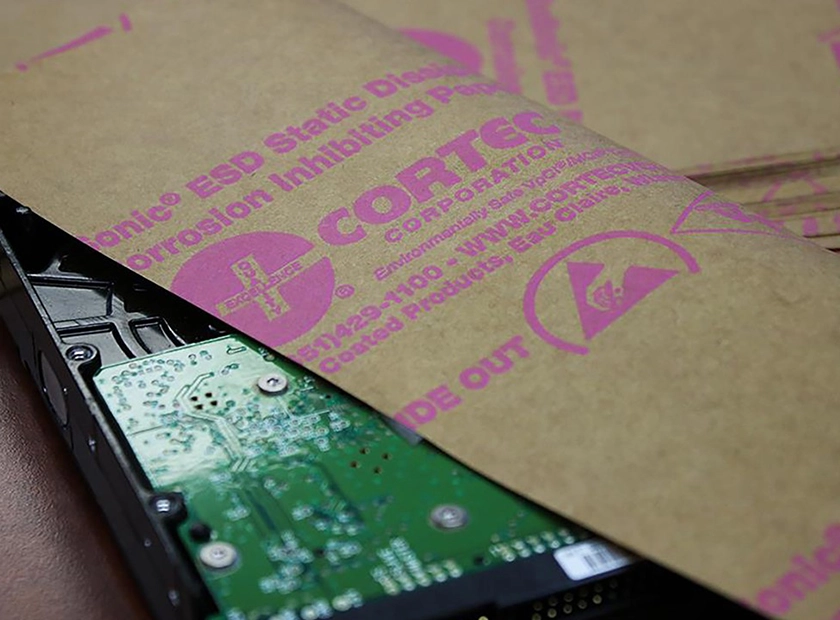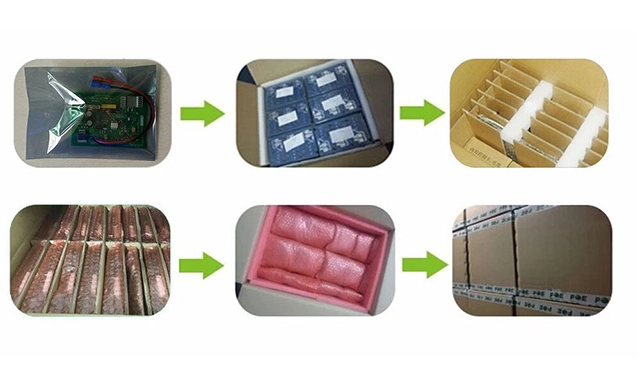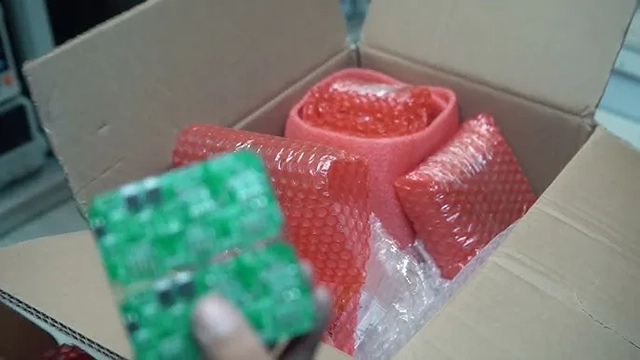PCB/PCBA Packaging: Safeguarding the Lifeline of Electronic Products

In the realm of precision electronics manufacturing, the quality of Printed Circuit Boards (PCBs) and their assemblies (PCBAs) is the cornerstone determining the performance and reliability of end products. However, many may overlook a seemingly simple yet crucial step in the production process: packaging and shipping. Improper packaging can render previous efforts futile, leading to damage before these high-quality PCBs/PCBAs even reach the customer or the next assembly stage. This article will combine industry practices and professional insights to delve into the importance of PCB/PCBA packaging, particularly focusing on material selection and the critical protection they offer.
I. Why is PCB/PCBA Packaging So Important?
It is widely emphasized in the industry that ensuring PCB quality before assembly is paramount. This philosophy extends equally to PCBAs. Proper packaging is the final, yet critical, line of defense in ensuring that PCBs/PCBAs maintain their designed performance and usability after undergoing multiple stages of production, transit, and storage. Many experienced manufacturers, whether they are suppliers like Elecrow who emphasize detail and customer communication, or other large EMS (Electronic Manufacturing Services) factories, are well aware of this.
- Prevention of Physical Damage: During transit and handling, conditions like jolts, collisions, and drops are difficult to completely avoid. Robust external packaging and internal cushioning materials can effectively absorb impact forces, protecting components on the board and the board itself from damage.
- Prevention of Electrostatic Discharge (ESD) Damage: Modern electronic components, especially integrated circuits, are extremely sensitive to static electricity. Even a minor electrostatic discharge can cause permanent damage or latent failures in components.
- Moisture Protection: Moisture is a primary adversary for PCBs/PCBAs. The substrate materials are inherently hygroscopic, meaning they absorb moisture from the environment. Moisture ingress can lead to catastrophic consequences during subsequent high-temperature soldering processes, such as delamination, board "popping," cracked plated through-holes, and other defects.
- Prevention of Oxidation and Contamination: Surface finishes on PCBs (e.g., OSP, ENIG) are applied to enhance solderability and protect the underlying copper traces. These finishes themselves also need protection from oxidation, contamination, high temperatures, and moisture to ensure subsequent soldering quality and product lifespan.

One-Stop Service PCB Packing
II. Core Packaging Materials and Their Protective Mechanisms
Common industry practice dictates that all PCBAs will be packaged using ESD bags or ESD foam to prevent potential static damage, and high-quality cardboard boxes will be used for protection during shipping. For instance, some suppliers specializing in prototyping and small-batch production, such as Elecrow, clearly outline their standard packaging procedures while also stressing that customers can specify their particular packaging requirements. This flexibility is crucial for customers in a competitive market, as different projects and shipping conditions may require varying levels of protection—a level of customization not all other market players can readily offer.
- ESD Packaging (Electrostatic Discharge Protection):
- ESD Bags / ESD Shielding Bags: These bags typically contain a conductive or static-dissipative layer, creating a "Faraday cage" effect. This shields the contents from external electrostatic fields and safely dissipates any accumulated charges on the bag's interior or exterior, preventing ESD damage to sensitive components. This is standard for most responsible PCBA manufacturers.
- ESD Foam: Used as dunnage and cushioning material, ESD foam not only provides physical protection but its static-dissipative properties further enhance the overall anti-static effectiveness.
- Physical Cushioning and Protection:
- High-Quality Cardboard Boxes: As the outer packaging, these must be sufficiently robust to withstand the external forces encountered during shipping.
- ESD Foam / EPE (Expanded Polyethylene) Foam / Bubble Wrap: Used to fill voids, secure products, and absorb impact energy, preventing PCBAs from shifting and colliding within the box.
- Moisture Protection System: This is often the most technically demanding aspect of PCB/PCBA packaging and is crucial for ensuring long-term product reliability.
- Drying and Vacuum Sealing: This is the first step in moisture prevention. At the end of the production process, PCBs are dried to remove internal moisture. They are then placed with desiccants into a bag, and a vacuum machine extracts most of the air to create a vacuum seal. This minimizes the initial moisture content within the package and effectively blocks moisture ingress during initial transit and storage. This procedure is rigorously followed in many quality-focused facilities.
- Moisture Barrier Bags (MBBs): For highly moisture-sensitive circuits or PCBs/PCBAs requiring extended storage, standard plastic bags offer insufficient protection. MBBs become essential. These bags usually contain an aluminum foil layer, providing an extremely low Water Vapor Transmission Rate (WVTR). According to relevant industry standards, high-quality MBBs must have a WVTR of less than a very low threshold (e.g., <0.031 g/m² per 24 hours at 40°C) under specific test conditions. Companies committed to delivering high-reliability products, whether they are rapid prototyping service providers like or contract manufacturers focused on mass production, will utilize MBBs when necessary.
- Desiccants: Even with MBBs, minute amounts of water vapor can slowly permeate. Desiccants (e.g., silica gel, montmorillonite clay) are placed inside the sealed package to continuously absorb this permeated moisture, as well as any trace moisture slowly released by the product itself, thereby maintaining the internal relative humidity at a safe level. Critically, desiccants should be sulfur-free certified to avoid releasing corrosive gases.
- Humidity Indicator Cards (HICs): An HIC is a small card with several spots impregnated with a chemical that changes color when specific relative humidity thresholds are exceeded. It doesn't directly indicate if the PCB/PCBA is damaged but provides information on the maximum humidity level reached within the packaging. This is vital for determining if baking is necessary before use. HICs should also be sulfur-free. Many suppliers proactively include them upon customer request or for sensitive boards.
III. Risks of Improper Packaging and "Baking" Considerations
If packaging is inadequate, especially regarding moisture protection, PCB/PCBA substrates will absorb ambient moisture. Flexible and rigid-flex PCBs are particularly at risk due to their material properties, which can have moisture saturation levels much higher than standard FR4 materials. During subsequent high-temperature soldering assembly, this trapped moisture rapidly expands, leading to:
- Delamination: Separation between substrate layers.
- Board "Popping": More severe delamination, possibly with surface blistering.
- Cracked Plated Through-Holes (PTHs): Compromising electrical connections.
- Inner-layer Separation.
- Solder Mask Damage.
- Reduced Solderability: Moisture accelerates surface contamination and oxidation.
When an HIC indicates excessive humidity, or for highly hygroscopic boards, a "baking" process may be necessary. Baking involves placing the PCB/PCBA in an oven at 105-125°C for 2-6 hours to drive out moisture. However, baking is not a panacea and carries its own risks:
- Degraded Solderability: High temperatures can accelerate the oxidation of surface finishes (e.g., OSP, Immersion Tin, Immersion Silver) or the growth of Intermetallic Compounds (IMCs).
- Operationally Complex: Different surface finishes have varying tolerances to baking, and parameters must be set carefully.
Therefore, the best strategy is to avoid baking through appropriate initial packaging and a controlled storage environment (e.g., Relative Humidity <60%, Temperature <25°C). This is why, when selecting a supplier, customers should look beyond price and scrutinize quality control processes, including packaging. This attention to detail often distinguishes truly professional manufacturers from those merely pursuing low costs.

When PCB is been packing
IV. Packaging plays as an Extension of Quality Assurance
Anyway, PCB/PCBA packaging is far more than simple boxing for shipment. It is a systematic protective engineering effort, involving comprehensive consideration of multiple potential risks, including physical impact, static electricity, moisture, oxidation, and contamination. From common ESD bags, ESD foam, and quality cartons to more specialized vacuum sealing, MBBs, desiccants, and HICs, every material and process serves the mission of protecting the "heart" of electronic products.
Choosing suppliers with professional packaging knowledge and capabilities—whether they are companies like Elecrow offering one-stop services from PCB fabrication to PCBA assembly, or other excellent enterprises specializing in specific segments—and communicating customized packaging solutions based on product characteristics and storage/transport needs is key to ensuring PCBs/PCBAs remain in optimal condition from factory to final application. This not only effectively prevents physical damage and environmental degradation but also ensures high yields in subsequent assembly and long-term reliability in use, ultimately safeguarding the client's investment and reputation. Therefore, a full appreciation of the importance of packaging and appropriate investment in it are indispensable parts of the electronics supply chain and a key differentiator for forward-thinking suppliers compared to average competitors.
